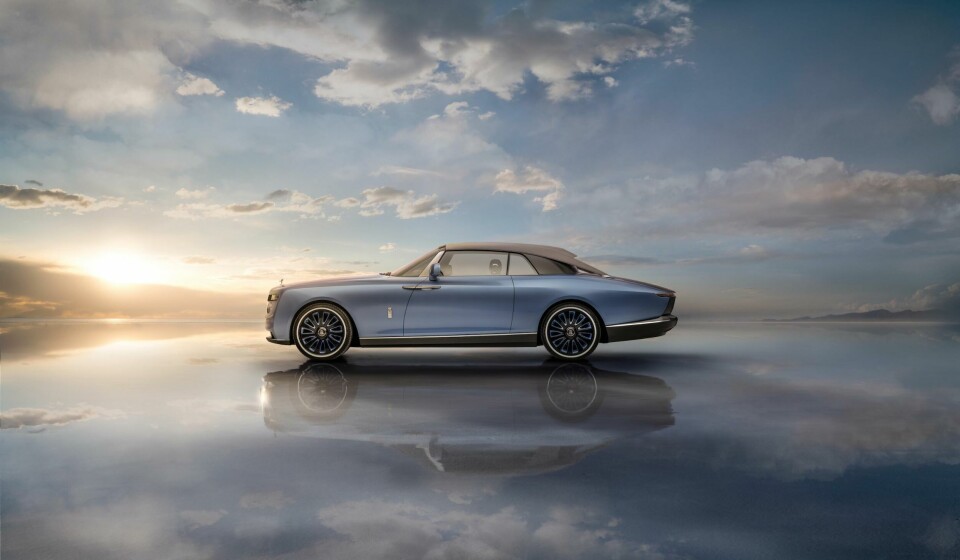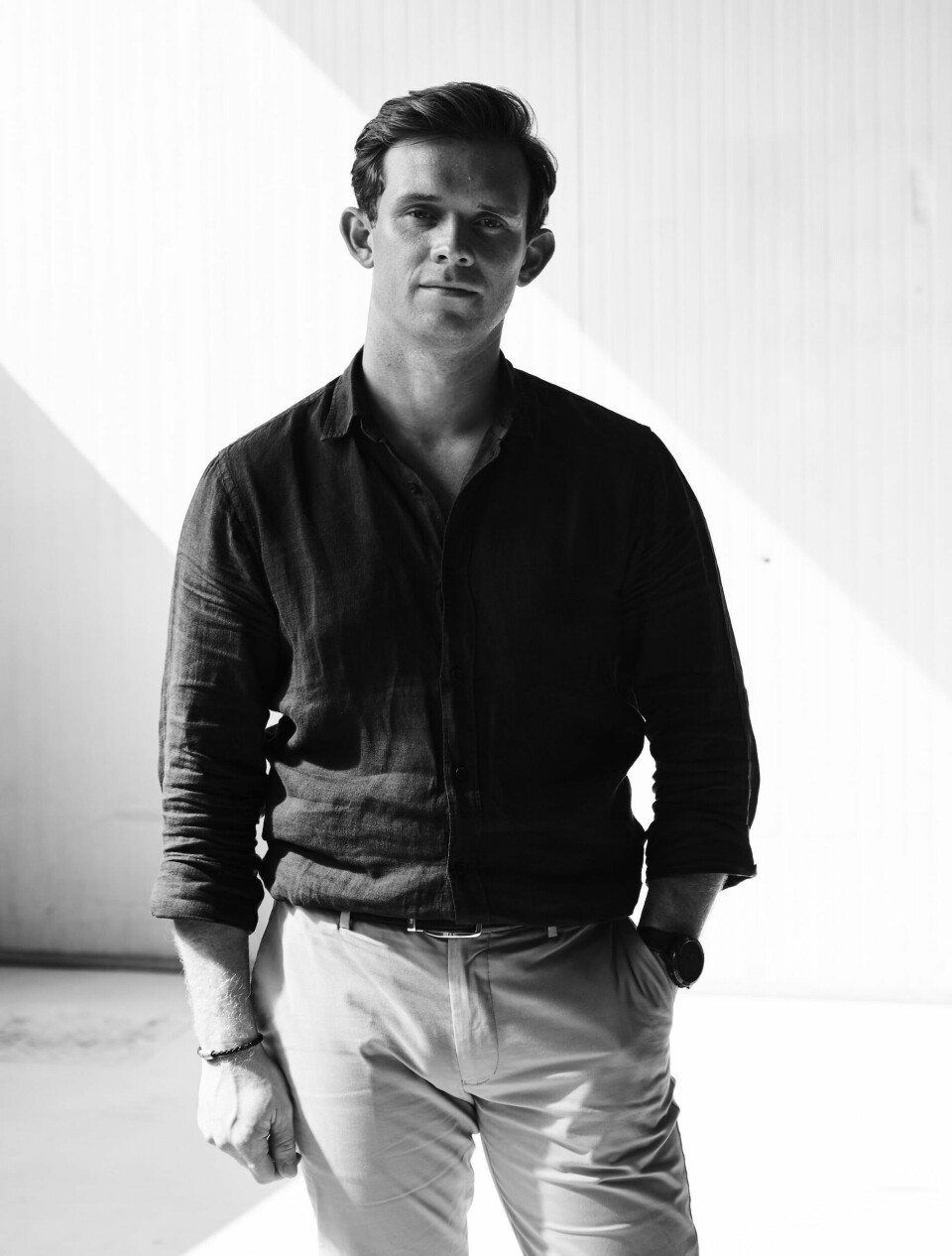
Rolls-Royce Boat Tail design in detail with Alex Innes
Alex Innes, head of coachbuild design at Rolls-Royce, talks us through the design of the new Boat Tail
Crossover between the worlds of car design and boat design is not uncommon – legendary French designer Patrick Le Quement is a leading exponent of both – but while the two disciplines share trails of thought and philosophy, they have typically remained separate. Until now. With its latest release dubbed Boat Tail, Rolls-Royce is blurring the boundaries between car and boat more than ever before.
Measuring almost 5.8 metres in length, the Boat Tail extends far out at the back to create a deck-like area. It’s cladded in an open pore wood veneer with a linear wood grain, producing an aesthetic reminiscent of the wooden rear decks of traditional boats.
Elsewhere, the nautical design influence is hinted at with the wrap-around windscreen, the sweeping negative line of the side skirts and bodywork, and the hand-painted gradated bonnet.

The commission-led design is the culmination of a four year collaboration with what Rolls-Royce describes as “three of our most special clients.” Speaking to Car Design News, Alex Innes, head of coachbuild at Rolls-Royce, provided more detail on the project.
Car Design News: What design details of the Boat Tail really stand out for you?
Alex Innes: Boat Tail represents a contemporary projection of the Rolls-Royce iconography, progressing so many of the familiar design tenets.
The pantheon grille, for example, is deconstructed and is now an integral part of the front end, not a polished applique. This design treatment creates a less formal representation of our most iconic feature and subverts an established hallmark – a notion only encouraged by the commissioning client. The resolution also afforded us the permission for the bonnet contrast colour to spill onto it, furthering the progressive representation of the marque.
It was crucial that the front end was also confident. The heavy brow projects a familiar Rolls-Royce authority while deep-set daytime running lights add concentration and focus to Boat Tail’s expression. Further down the front end, round lamps offer some classical relief. We’ve also very purposefully moved away from the more traditional vertical orientation of our rear lamps, which projects height and stature, to a less formal horizontal emphasis, exaggerating a sense of width. Proudly, we’ve achieved this through reduction, not adding component elements.
Another unique characteristic is Boat Tail’s generosity of scale. Moreover, establishing its grandeur by way of length and width meant that we did not have to generate the impression of scale through design. We were free to focus entirely on creating a very pure, unencumbered contemporary design statement guided by the principles of reduction.
The simplicity of line and sobriety of the surface treatment really amplifies the confidence of the concept.
CDN: Can you explain how you drew on influences from the nautical design?
AI: As a creative team we were inspired by the idea that Boat Tail would not be the means to reach the destination, but the destination itself and therefore transcending a mere means of transportation.
This is where the spirit of the nautical influence began. You do not use a motor launcher as a means of conveyance, you do so for the experience. This was the guiding philosophy with Boat Tail.
Of course the nautical theme extends to more obvious representations; the wrap-around windscreen treatment recalls the wrap-around visor on motor launches, while the brightwork on the A-pillar is pushed backwards, both emphasising the dash-to-axle proportion and suggestively referencing the long bow sections of racing yachts.
Towards the rear of the car, the nautical references become more recognisable. The aft deck, which is a modern interpretation of the wooden rear decks of historical Boat Tails, incorporates these large swathes of wood. Each veneer leaf is slightly fanned as if it was hewn from a single, organic piece cultivated for the purpose. The authentic open pore treatment enhances its functional aesthetic and these precise stainless-steel inlays serve as a visual nod to the typical wooden construction of yachts – both old and new.
The veneer treatment extends to the lower transom area resolving the taper and overall volume. This echoes the conclusion of a yacht’s hull form astern. The bold truncation serves as a modern twist on the converging lines of classic Boat Tail bodies.
From dead rear, there’s strong graphical composition and a confident feature break up. As with the front, you notice a horizontal emphasis, but it’s pulled down – the low rear end and horizontal, deep-set lamps establish a dramatically low trailing edge of the car, evoking the dipped stern and proud bow of a motor launch planning.
CDN: There must have been some big challenges and balancing between design and engineering. Can you talk us through some any of the key points that were tricky, and perhaps outline how you pushed through?
AI: From a technical perspective, Rolls-Royce is very well prepared for realising these ambitious commissions, but the real art of this project – and the real art of true coachbuilding - is capturing the client. An aspect that united every single person who worked on this extraordinary motor car regardless of their role.
The confluence between design and engineering during the project is among the best I have ever experienced. As a collective we all wanted to further the practise of our chosen discipline to create something extraordinary for our commissioning client, and for the marque’s legacy. Something which had never been seen before.
In particular, the pursuit of reduction on the exterior represented a sizeable technical challenge. The irony of simplicity is that it is incredibly complex to achieve. With the bodywork itself we were able to exploit the opportunities opened up with a hand-built car that normal industrialised processes would prevent. The absence of shut lines, the fidelity of line and the quality of surface all enhance the overall purity of form. I firmly believe that this elevates Boat tail to a work of sculpture.
There is also the hosting suite. A celebratory focal point for a shared occasion. This enormous technical undertaking was informed by the simple notion of hosting. An almost whimsical vision that pulled on the team’s very best creative and technical ingenuity. In the development of this particular feature there was little distinction between the creative and technical hands involved. We all simply wanted to will the vision into existence. The hosting suite imbues a dutiful quality that’s at the heart of Rolls-Royce, but it’s expressed in a celebratory way, subverting the very notion of the motor car. It is both the means and the purpose of the journey.
CDN: Did you use any unusual processes during the design of the model?
AI: The most unusual aspect of the project was of course the dimension relating to the clients’ involvement and guidance throughout the creative process. The clients who ultimately went on to commission Boat Tail did so on the merit of a tentative sketch and a vision we described, pouring nothing but encouragement, passion and trust into the project along the way. This pushed us to move beyond the usual constraints while inspiring us along the way with suggestive insights into their character and personality.
A trust we returned with unprecedented access; The design studio, the early and final clay models, the metal work – the clients experienced it all with us. It was a truly humbling experience.
















